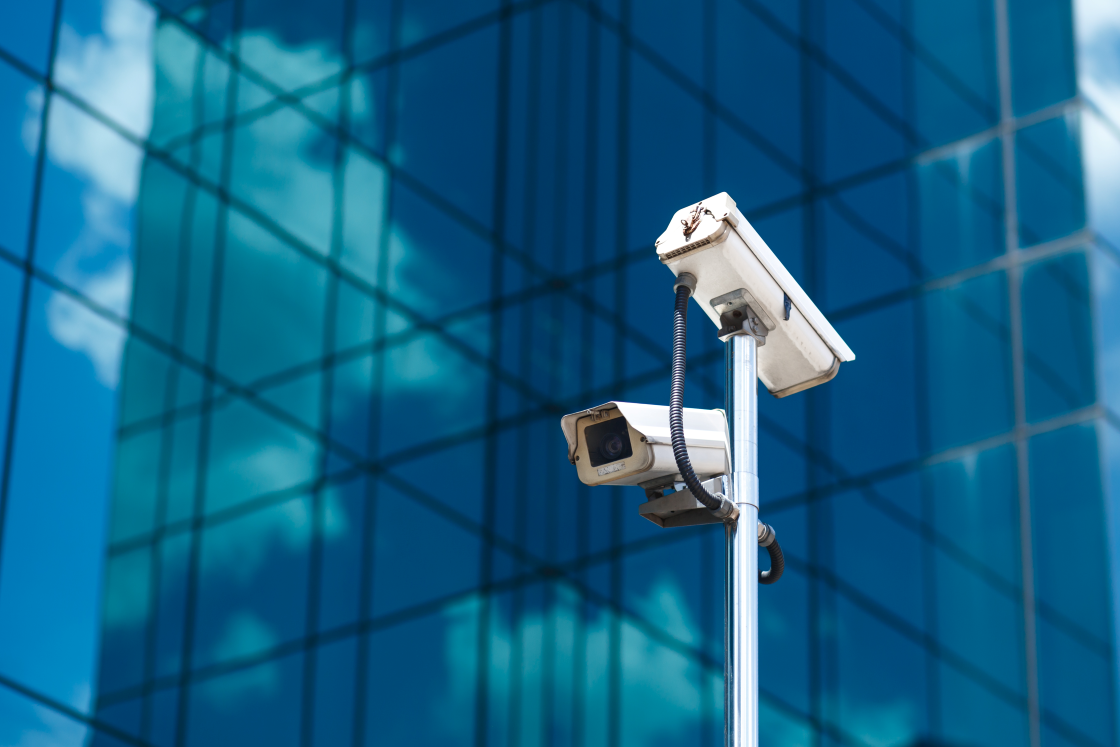The Ethics of Surveillance Technology
In the wake of the Sept. 11 attacks there’s been more emphasis on protecting public places and tracking terror threats. But what are the ethics of this?
Published January 1, 2002
By Fred Moreno, Dan Van Atta, Jill Stolarik, and Jennifer Tang
Academy Contributors

Picture yourself living each day under the watchful eye of a network of surveillance cameras that track your movements from place to place. Every time you enter a large building or public space, your facial features are compared with those in a database of known criminals and terrorists. Do you feel safer knowing that someone, somewhere is watching?
This may sound farfetched, or something out of George Orwell’s dystopian novel 1984, but closed circuit TVs (CCTVs) –– like those being widely used in the United Kingdom –– and facial recognition systems are just two of the many well developed technologies the government and private companies are considering to bolster security. The Pentagon issued a request for new security proposals in the wake of the September 11 terrorist attacks and, already, new anti-terrorism laws have expanded the government’s surveillance powers.
Complex technological security measures are “coming on faster than lawmakers and the public can process and evaluate them,” said Susan Hassler, editor-in-chief of the IEEE Spectrum and moderator of a recent media briefing on surveillance technology at The New York Academy of Sciences (the Academy). Sponsored by the Academy and the IEEE Spectrum, the briefing mirrored the debate now being waged in the Congress, the Pentagon, the media –– and on the streets.
A New Manhattan Project
To sift through the myriad security ideas, Michael Vatis, director of the Institute for Security Technology Studies at Dartmouth College, issued “a clarion call for a new Manhattan Project.” Vatis proposed that security experts from industry, academia and government be asked to assess and recommend available surveillance technologies.
“I urge that we develop a mechanism to bring together expertise from across different fields to develop a research and development agenda to counter the threats now facing us,” Vatis said. Such an effort is even more urgent in light of the Pentagon’s recently published security technology “wish list,” he added. Biometrics, a technology used for analysis and quantification of the physical features of an individual, is already “on the radar” of law enforcement and airport security companies.
Biometrics, a technology used for analysis and quantification of the physical features of an individual, is already “on the radar” of law enforcement and airport security companies. Facial recognition is one aspect of biometrics that could be deployed in counter-terrorism efforts. “The cornerstone of our defense against crime and terror is our ability to identify and deter those who pose a threat to public safety,” said Joseph Atick, chairman and CEO of the Visionics Corp., a leader in the biometrics field.
Atick said facial recognition systems could be used in airports. As passengers pass through security gates, the systems could capture an image of each face, analyze its features and produce a unique, 84-byte computer code to describe it.
Vatis said this technology is an adjunct to security measures already in place such as X-rays, bag checks and metal detectors. Unlike a person scanning a crowd, he said, this technology “delivers security in a non-discriminatory fashion — free of prejudices.”
Increasingly Pervasive and Invasive Surveillance
Barry Steinhardt, associate director of the American Civil Liberties Union, said he was troubled not only by the specter of increasingly pervasive and invasive surveillance technologies, but also by the danger that government and industry leaders could, under pressure to act, invest in technologies that don’t work and instead provide a false sense of security. “As we look at any technology that may be introduced into society, we have to ask: Does it improve security? How much does it threaten our liberties? And do the benefits outweigh the risks?”
While facial recognition systems may or may not ever be implemented widely, we can look across the Atlantic to study the effects of a surveillance technology that’s been adopted with enthusiasm. Over the past decade, Britons have welcomed the installation of CCTVs in public places, work spaces and homes. Estimates are that some 2 million CCTVs are now scattered throughout the country, said Stephen Maybank, of the department of computer science at the University of Reading in the U.K.
The British fervor for CCTV comes from the belief that the cameras deter criminal activity, a contention that some studies support. The London Underground alone is laced with 4,000 cameras, and the sheer numbers of CCTVs pose problems: how does one store all the data and how can one find a particular image amongst all the data that’s stored?
Better and Cheaper Cameras
Improvements are coming in CCTV technology that will further encourage their use, said Maybank. “Cameras are becoming better and cheaper; they will soon work on low power and will be easy to install –– some are reduced to the size of a thumb. Software for people-tracking and behavior recognition also is improving. And large, coordinated camera networks are coming that will enable the analysis and description of people as they move over large areas.”
Closer to home and on a much smaller scale, anecdotal reports about CCTVs point to drawbacks in their use as crime stoppers. Robert Freeman, executive director of the New York State Committee on Open Government, reported that some residents and shopkeepers on the perimeter of New York City’s Washington Square Park believe the installation of CCTVs in the park simply pushed crime to the fringes of the areas.
New ideas will continue to emerge on how best to protect ourselves from future threats. Government’s challenge will be to select the best of the alternatives, technologies that pose the least threat to our civil liberties, and to knit them together to form an invisible shield –– without creating a technological version of the Emperor’s new clothes.
Also read: The Ethics of Developing Voice Biometrics
